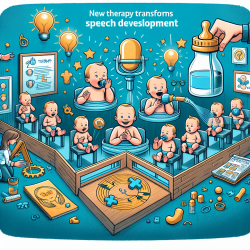Introduction
In the realm of speech-language pathology, the integration of data-driven approaches has become increasingly vital for creating effective and personalized therapy plans. TinyEYE, a leader in providing online therapy services to schools, leverages these data-driven strategies to enhance outcomes for children. This blog explores how TinyEYE uses data to make informed decisions and improve the speech and language development of young learners.
The Importance of Data-Driven Decisions
Data-driven decision-making involves the use of quantitative and qualitative data to guide clinical judgments and therapy interventions. This approach ensures that therapy is tailored to the specific needs of each child, thereby maximizing the effectiveness of the interventions. In speech-language pathology, data can be collected from various sources, including:
- Standardized assessment tools
- Progress monitoring
- Parent and teacher feedback
- Observational data
By analyzing this data, speech-language pathologists (SLPs) can identify patterns, track progress, and adjust therapy plans as needed.
How TinyEYE Utilizes Data
TinyEYE employs a comprehensive data-driven approach to deliver high-quality online speech therapy. The following methods highlight how TinyEYE uses data to enhance therapy outcomes:
- Initial Assessments: TinyEYE conducts thorough initial assessments using standardized tools to establish a baseline for each child's speech and language abilities.
- Progress Tracking: Continuous monitoring of a child's progress is essential. TinyEYE's platform allows for regular data collection and analysis, ensuring that therapy remains on track.
- Customized Therapy Plans: Based on the collected data, TinyEYE SLPs develop personalized therapy plans that address the unique needs of each child.
- Feedback Integration: TinyEYE values the input of parents and teachers. Their feedback is incorporated into the therapy process to provide a holistic approach to child development.
Benefits of Online Therapy with TinyEYE
Online speech therapy offers numerous advantages, particularly when combined with data-driven decision-making:
- Accessibility: Online therapy eliminates geographical barriers, providing access to quality services regardless of location.
- Flexibility: Sessions can be scheduled at convenient times, accommodating the busy schedules of families and schools.
- Engagement: Interactive online tools and resources keep children engaged and motivated during therapy sessions.
- Consistency: Regular data collection ensures that therapy remains consistent and effective over time.
Case Study: Success with Data-Driven Online Therapy
Consider the case of Emily, a 7-year-old with a speech sound disorder. Using TinyEYE's data-driven approach, Emily's SLP conducted an initial assessment and developed a personalized therapy plan. Over the course of six months, regular progress monitoring and feedback from Emily's parents and teachers were integrated into her therapy. The data revealed significant improvements in Emily's articulation and overall communication skills, demonstrating the efficacy of TinyEYE's approach.
Conclusion
Data-driven decision-making is a cornerstone of effective speech-language therapy. TinyEYE's commitment to using data to inform therapy plans ensures that children receive the best possible care, leading to improved speech and language outcomes. By combining the power of data with the flexibility of online therapy, TinyEYE is making a meaningful difference in the lives of children and their families.
References
American Speech-Language-Hearing Association. (2020). The Role of Data in Speech-Language Pathology. Retrieved from https://www.asha.org/










